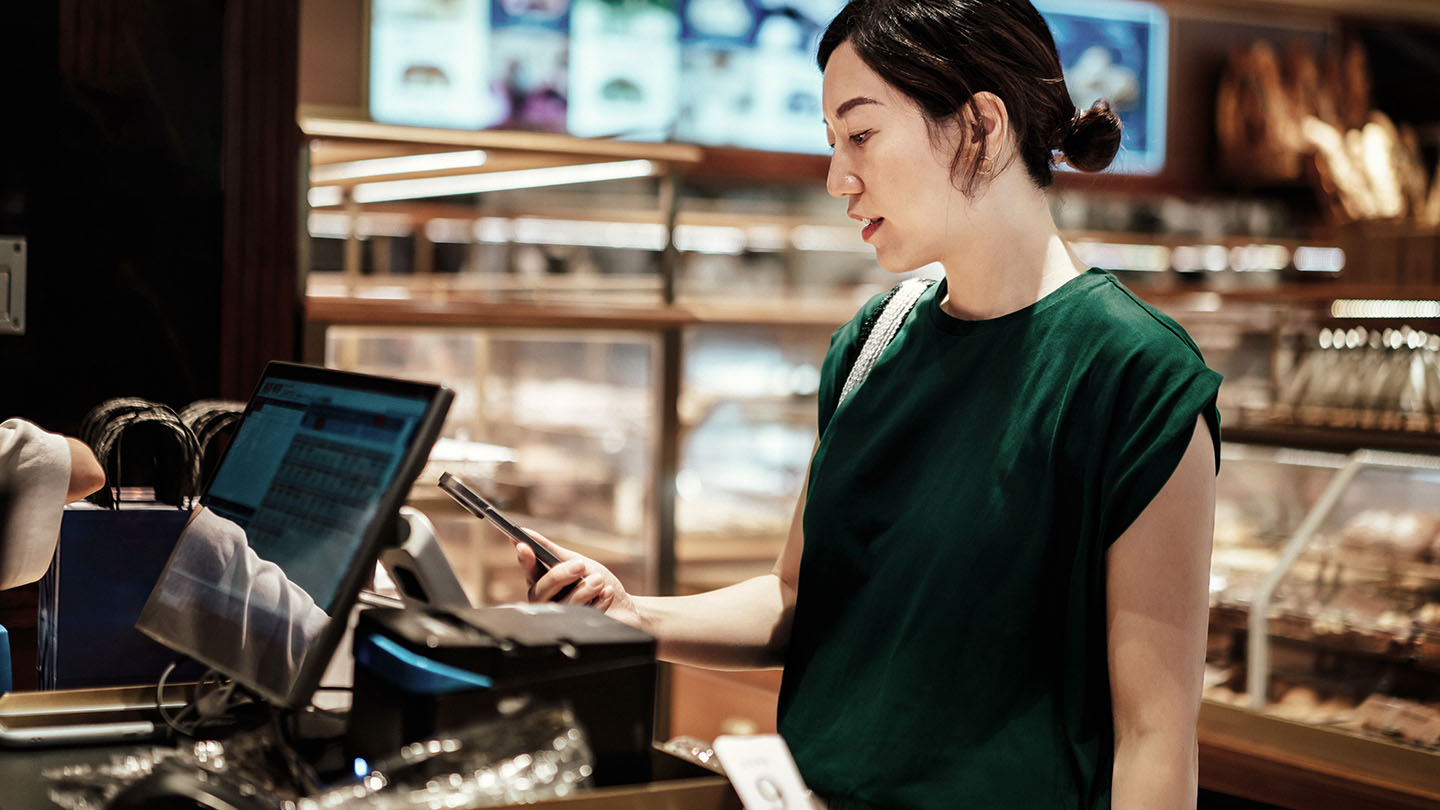From startups to legacy brands, you're making your mark. We're here to help.
-
Innovation Economy
Fueling the success of early-stage startups, venture-backed and high-growth companies.
-
Midsize Businesses
Keep your company growing with custom banking solutions for middle market businesses and specialized industries.
-
Large Corporations
Innovative banking solutions tailored to corporations and specialized industries.
-
Commercial Real Estate
Capitalize on opportunities and prepare for challenges throughout the real estate cycle.
-
Impact Banking & Advisory
When our communities succeed, we all succeed. Local businesses, organizations and community institutions need capital, expertise and connections to thrive.
-
International Banking
Power your business' global growth and operations at every stage.
Key Links
Prepare for future growth with customized loan services, succession planning and capital for business equipment.
-
Asset Based Lending
Enhance your liquidity and gain the flexibility to capitalize on growth opportunities.
-
Equipment Financing
Maximize working capital with flexible equipment and technology financing.
-
Trade & Working Capital
Experience our market-leading supply chain finance solutions that help buyers and suppliers meet their working capital, risk mitigation and cash flow objectives.
-
Syndicated Financing
Leverage customized loan syndication services from a dedicated resource.
-
Commercial Real Estate
Capitalize on opportunities and prepare for challenges throughout the real estate cycle.
-
Employee Stock Ownership Plans
Plan for your business’s future—and your employees’ futures too—with objective advice and financing.
Key Links
Serving the world's largest corporate clients and institutional investors, we support the entire investment cycle with market-leading research, analytics, execution and investor services.
-
Institutional Investors
Putting your long-tenured investment teams on the line to earn the trust of institutional investors.
-
Markets
Direct access to market leading liquidity harnessed through world-class research, tools, data and analytics.
-
Prime Services
Helping hedge funds, asset managers and institutional investors meet the demands of a rapidly evolving market.
-
Global Research
Leveraging cutting-edge technology and innovative tools to bring clients industry-leading analysis and investment advice.
-
Securities Services Solutions
Helping institutional investors, traditional and alternative asset and fund managers, broker dealers and equity issuers meet the demands of changing markets.
Key Links
Providing investment banking solutions, including mergers and acquisitions, capital raising and risk management, for a broad range of corporations, institutions and governments.
-
Center for Carbon Transition
J.P. Morgan’s center of excellence that provides clients the data and firmwide expertise needed to navigate the challenges of transitioning to a low-carbon future.
-
Corporate Finance Advisory
Corporate Finance Advisory (“CFA”) is a global, multi-disciplinary solutions team specializing in structured M&A and capital markets. Learn more.
-
Development Finance Institution
Financing opportunities with anticipated development impact in emerging economies.
-
Sustainable Solutions
Offering ESG-related advisory and coordinating the firm's EMEA coverage of clients in emerging green economy sectors.
-
Mergers and Acquisitions
Bespoke M&A solutions on a global scale.
-
Capital Markets
Holistic coverage across capital markets.
Your partner for commerce, receivables, cross-currency, working capital, blockchain, liquidity and more.
Key Links
A uniquely elevated private banking experience shaped around you.
-
Banking
We have extensive personal and business banking resources that are fine-tuned to your specific needs.
-
Investing
We deliver tailored investing guidance and access to unique investment opportunities from world-class specialists.
-
Lending
We take a strategic approach to lending, working with you to craft the right financing solutions matched to your goals.
-
Planning
No matter where you are in your life, or how complex your needs might be, we’re ready to provide a tailored approach to helping your reach your goals.
Whether you want to invest on your own or work with an advisor to design a personalized investment strategy, we have opportunities for every investor.
-
Invest on your own
Unlimited $0 commission-free online stock, ETF and options trades with access to powerful tools to research, trade and manage your investments.
-
Work with our advisors
When you work with our advisors, you'll get a personalized financial strategy and investment portfolio built around your unique goals-backed by our industry-leading expertise.
-
Expertise for Substantial Wealth
Our Wealth Advisors & Wealth Partners leverage their experience and robust firm resources to deliver highly-personalized, comprehensive solutions across Banking, Lending, Investing, and Wealth Planning.
Explore a variety of insights.
Key Links
Insights by Topic
Explore a variety of insights organized by different topics.
Key Links
Insights by Type
Explore a variety of insights organized by different types of content and media.
Key Links
We aim to be the most respected financial services firm in the world, serving corporations and individuals in more than 100 countries.
Key Links
- Insights
- Payments
- Embedded Finance & Banking-as-a-Service (BaaS)
- Digital wallets help you go everywhere your customers go

The e-commerce market continues to grow at breakneck speed. Online sales revenue in the U.S. topped $1 trillion in 2020 for the first time and the market is still growing at more than 10 percent per year1. This growth goes hand in hand with another rising trend – the convergence of physical and digital shopping experiences. Consumers now expect the best of both worlds and this need is increasingly being met through digital wallets.
Here are five ways digital wallets are changing customers’ expectations for speed, convenience and value.
1. Anytime, anyplace payments
We live in an on-demand world. We expect to be able to research at whatever time we want online, approve an invoice as soon as it arrives via email and even get a pizza delivered via our smartphone at midnight. Most of us keep our phones with us at all times, and with a digital wallet, our cards and banking details are with us too.
2. Personalized customer journeys
In a competitive sales market, being able to offer a payment journey that feels personalized to the needs and interests of the customer can be a key differentiator. This means more functionality to foster peer-to-peer payments, or to help people split meals with friends or bills with roommates.
3. Integrated loyalty
Everybody loves a deal, and digital wallets allow loyalty programs such as air miles and store loyalty programs to be seamlessly integrated. Google Pay works with brands such as Burger King, Panera, Etsy, Warby Parker and many others to provide deals and discounts that are accessible via the digital wallet.
4. Integrated banking
Some payment apps, like Venmo and Google Pay, can integrate P2P payments. This enables a user to split a restaurant or rideshare bill between friends and choose whether their share is drawn directly from their bank account or a debit or credit card.
5. Invisible payments
Chances are you have already made this type of payment. Think of Uber, or a subscription wine or beer service, where the payments take place instantly and automatically, without the need for repeated authorizations. The checkout is disappearing into the background of each transaction—customers want to be able to shop securely, seamlessly, and with a minimum of interactions.
Connect with your J.P. Morgan representative to find the right digital wallet solution for your business.
References
The views and opinions expressed herein are those of the author and do not necessarily reflect the views of J.P. Morgan, its affiliates, or its employees. The information set forth herein has been obtained or derived from sources believed to be reliable. Neither the author nor J.P. Morgan makes any representations or warranties as to the information’s accuracy or completeness. The information contained herein has been provided solely for informational purposes and does not constitute an offer, solicitation, advice or recommendation, to make any investment decisions or purchase any financial instruments, and may not be construed as such.
JPMorgan Chase Bank, N.A. Member FDIC.
JPMorgan Chase Bank, N.A., organized under the laws of U.S.A. with limited liability.
Related insights

Payments
Cargill and J.P. Morgan Payments transform agricultural payments in Brazil
Dec 15, 2025
Learn how the global agricultural leader is supporting financial stability for farmers with real-time payments.

Payments
We’re putting developers in the driver’s seat
Dec 05, 2025
Discover the J.P. Morgan Payments Developer Portal, where you can access APIs, tools, and resources to help build secure and robust treasury and payment solutions.

Payments
Plan for the holiday season ahead: How shoppers are redefining retail expectations
Nov 21, 2025
Recent Customer Insights data shows Gen Z is driving new trends in retail, payment preferences and omnichannel shopping. Retailers who adapt to these evolving habits may be better positioned to benefit from future spending this holiday season.

Payments
Bridging the gap: G20's vision for inclusive and efficient global payments
Nov 18, 2025
The G20 and Financial Stability Board, supported by key industry players like J.P. Morgan, are focused on improving cross-border payments by making them faster, cheaper, more transparent and more accessible.

Payments
JDS Industries unlocks 10% savings and 50% faster processing with J.P. Morgan
Nov 05, 2025
Discover how JDS Industries leveraged J.P. Morgan Commerce Solutions to streamline operations and drive strategic growth.

Payments
Fintech partnership and operational strategy guide
Oct 24, 2025
Download our e-book to better understand fintech challenges through institutional banking expertise and strategic frameworks.

Payments
Driving advanced cross-currency payments for financial institutions
Oct 23, 2025
Rethink the way you do cross-border business with Xpedite, an innovative global solution from J.P. Morgan Payments.

Payments
Managing operational complexity in digital commerce
Oct 23, 2025
Learn how unified payment solutions reduce costs, prevent fraud and create seamless customer experiences that drive loyalty.
You're now leaving J.P. Morgan
J.P. Morgan’s website and/or mobile terms, privacy and security policies don’t apply to the site or app you're about to visit. Please review its terms, privacy and security policies to see how they apply to you. J.P. Morgan isn’t responsible for (and doesn’t provide) any products, services or content at this third-party site or app, except for products and services that explicitly carry the J.P. Morgan name.